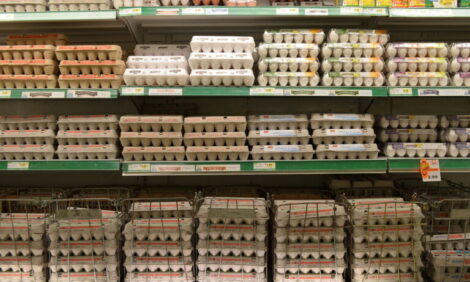



Water utilisation in broilers
Promoting the sustainability of broiler production and maximising broiler health, welfare, and productivity.Water is a key nutrient for all living things and its use by both humans and livestock must be sustainable and responsible. For broilers, water intake can be considered an optimum trait.
- Low water intake can result in reduced feed intake and flock health issues.
- Excessive water intake can be indicative of gut health issues and increases the occurrence of wet litter and the ventilation requirements of a house (Aviagen estimates show that around 70 - 80 percent of the water consumed by a broiler is excreted either as droppings or expelled as moisture which then needs to be removed from the house).
Ensuring broilers optimise their water intake not only promotes the sustainability of broiler production through its influence on energy (ventilation) and water use, but also maximises broiler health, welfare, and production. The routine on-farm recording of water intake is a key management practice which can help to identify potential health or management issues. Understanding drinking behavior allows best practice drinking management to be put in place so that the preferred drinking behavior of a flock can be supported and promoted.
Water intake and gut Health
It is common for birds to increase their water intake during an intestinal disturbance (Figure 1); therefore any sudden fluctuations in water intake may indicate the onset of intestinal issues and must be investigated. Birds often drink more water as a means to cool down when they get too hot, therefore prolonged periods of elevate water intake may be a sign of heat stress which is known to reduce intestinal integrity. Excessive water intakes can also be an indication of high mineral levels (particularly sodium) in the water the birds are drinking. Therefore, it is important to analyse the water being provided to the birds if water intake is excessive. The impact of increased water in the gut can decrease feed transit time through the gut which in turn can reduce the efficiency of the gut and increase the risk of dysbacteriosis. Furthermore, increased moisture in the gut results in wetter feces which can increase litter moisture; wetter litter provides a more favorable environment for the parasite Eimeria and thus increases the risk of coccidiosis. It is important to monitor water intake as increased water intake, whether sudden or prolonged, can be indicative of direct intestinal health issues or highlight management issues which could impact upon intestinal health.
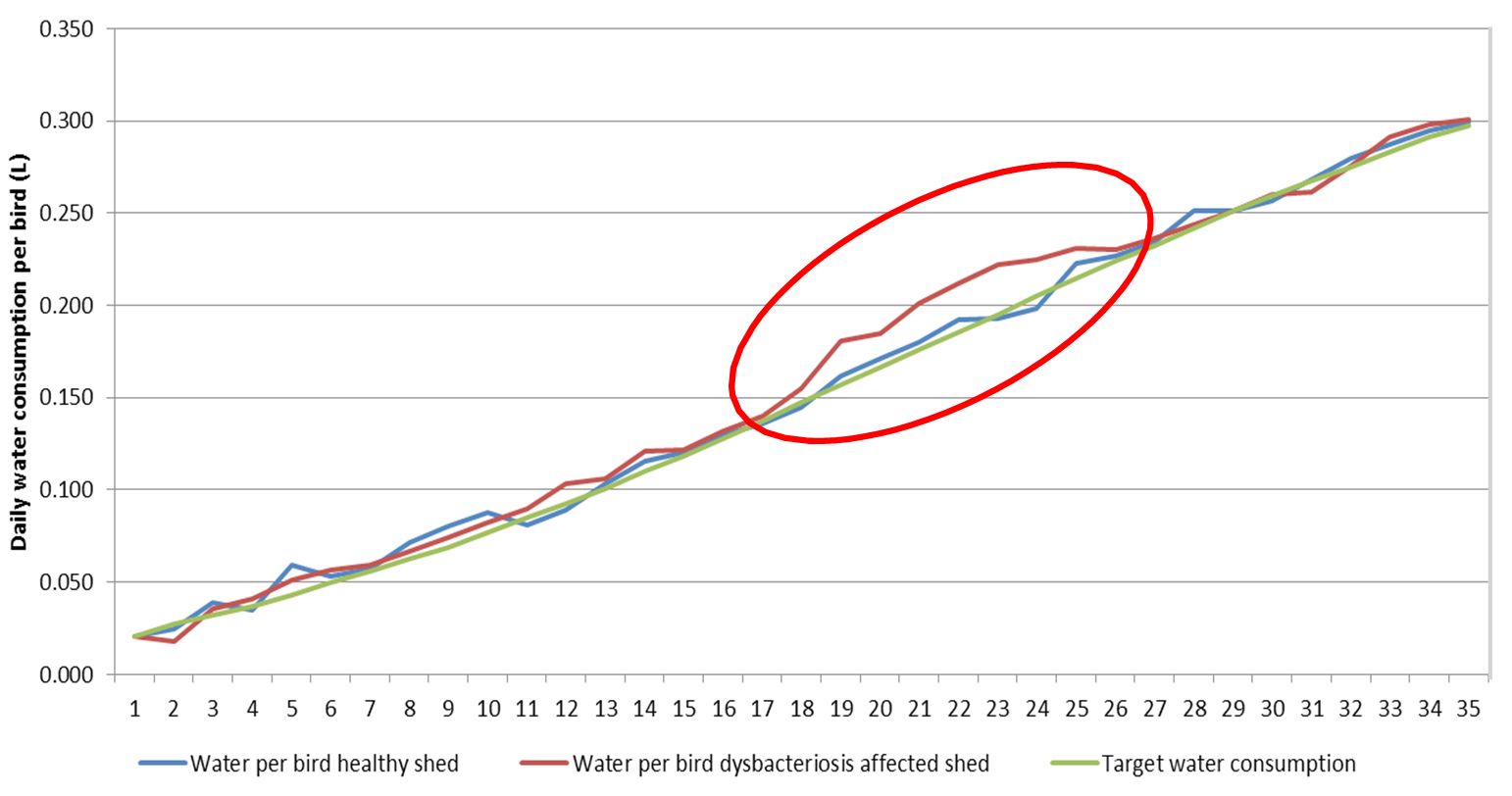
Figure 1. Daily water consumption of healthy birds compared to birds with dysbacteriosis
Key times for water intake
Water intake records in thousands of individual birds in the Aviagen breeding programme indicate that the daily pattern of water intake is, as might be expected, similar to that of feeding. Like feeding, most drinking takes place when the lights are on with little drinking occurring in the dark. The time spent at the drinkers is highest in the period immediately after the lights have been switched on and water consumption is fairly evenly spread out throughout the day thereafter (Figure 2). Time spent at the drinker after the lights are switched on is influenced by the length of the dark period given; the longer the dark period, the higher the proportion of time spent at the drinkers when the lights are turned on (Figure 2). Birds clearly learn when lights are going to go off as there is a reduction in water intake prior to the lights being turned off. This is particularly obvious immediately prior to the longer of the two dark periods.
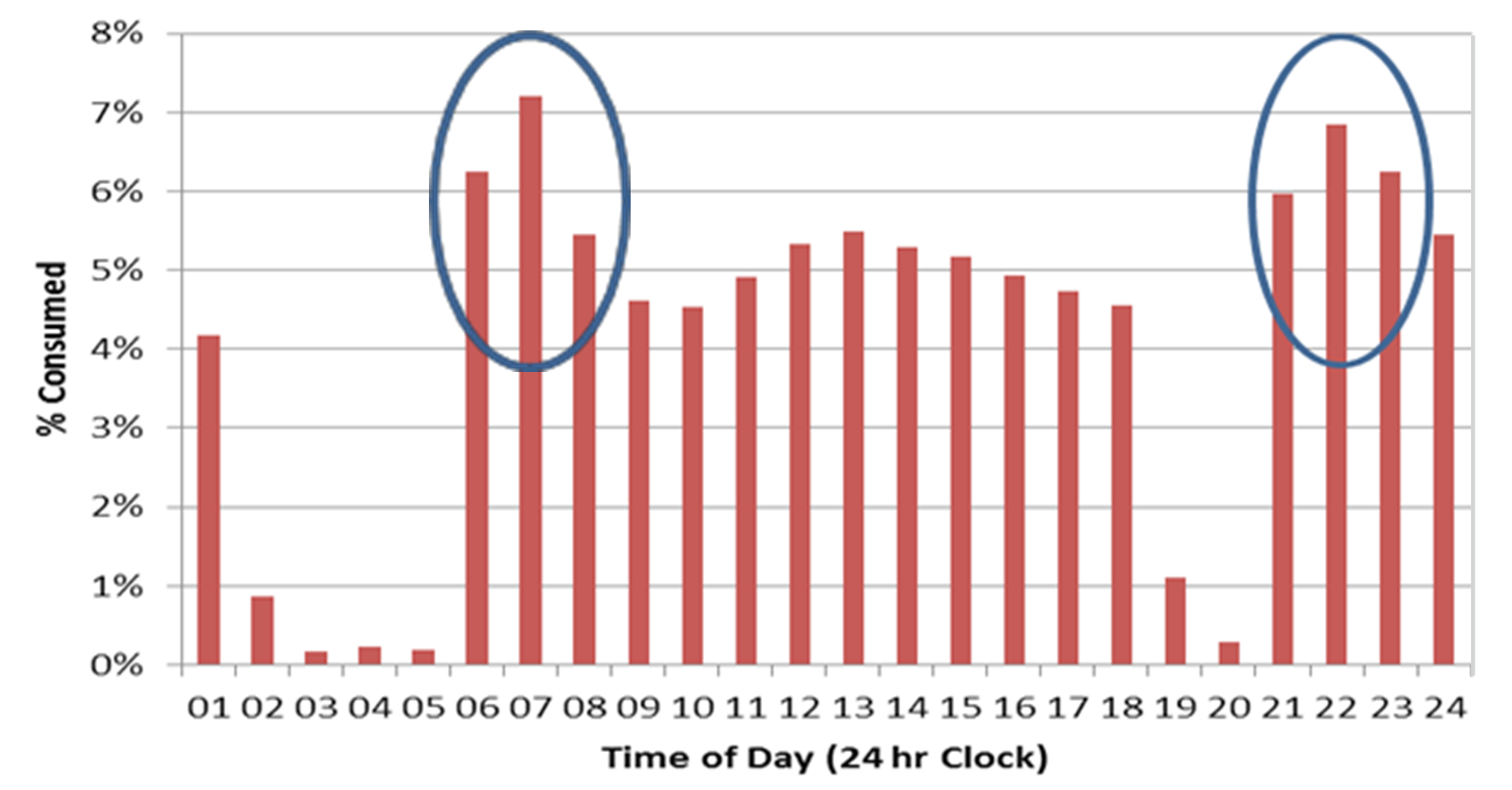
Figure 2. Distribution of water consumption during a day. The red circles highlight the increased water intake in the period immediately after the lights are switched on (5am and 8pm)
Understanding how water intake is distributed across the day and how diurnal patterns of light and dark affect water intake, allows the appropriate management of drinking equipment and supply of water to take place so that optimal water intake can occur. In order to allow birds to drink as they would prefer it is important to make sure that all birds have unrestricted access to water at all times when the lights are on, this is particularly important immediately after the lights come on.
This means ensuring that:
- Recommended drinking space is provided (Table 1).
- Adequate water flow rates are in place (Table 2).
- There are no physical barriers to the drinkers.
- Blocked nipples are replaced.
- Drinkers are well-maintained and kept in a good state of repair.
- Water pressure is correct for bird age and number.
- A clear and proven cleaning and disinfection programme is followed.

Table 1. Minimum drinker requirements per 1000 broilers post brooding

Table 2. Recommended flow rates for nipple drinkers
When the total percentage of time birds spend drinking in a day, as a proportion of the total time the lights are on in a day, is compared to the amount of time spent completing other behaviors, the time spent drinking is relatively small (Figure 3). Data collected from Aviagen shows that birds under good environmental and management conditions when fed a good quality pelleted feed and given access to an open water source (open drinking cups), spend, on average, approximately 6% of their time drinking and feeding. This data shows that the modern broiler does not need to spend a significant amount of time feeding and drinking in order to satisfy its requirements for growth and maintenance.
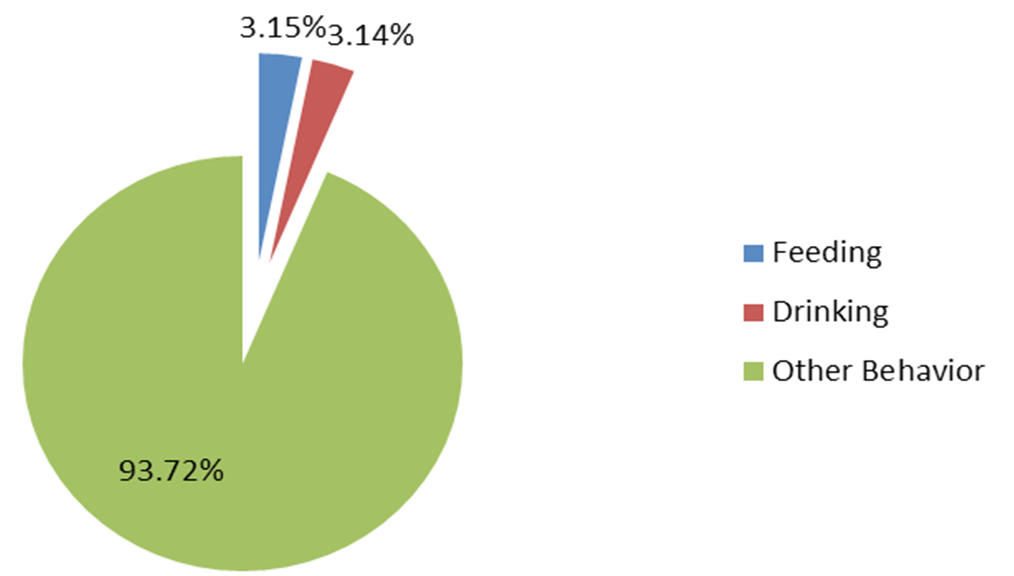
Figure 3. Proportion of time broilers spend feeding and drinking during the day light hours (18 hours in this example)
Time spent drinking (and feeding) will vary depending on temperature, feed type and drinker type. If a mash or poorer quality feed form (with a high percentage of fines) is fed, or if nipple drinkers are used or environmental temperature is high, time spent feeding and drinking would be expected to be higher. Indeed internal data from Aviagen shows that on a mash diet time spent feeding is approximately 3 times that of time spent feeding on a good quality pelleted diet. However, the amount of time birds spend drinking (and feeding) is still expected to remain fairly low (less than 20 percent).
Key drinking behaviors
Drinking behavior appears to be similar to feeding behavior in that birds will have a number of drinking "bouts" in a day, in the same way that they have a number of feeding bouts or meals in a day. Each bout of drinking consists of several ‘visits’ to the drinker, with each visit being separated by a short period of time. This is also seen during feeding where a meal consists of several visits to the feeder each separated by a short period of time. Once a drinking bout (or meal) is completed, there will be a longer period of time during which the birds will not visit the drinker.
This is important for a number of reasons. Firstly, it highlights the close link between feeding and drinking behavior and the importance of placing feeders and drinkers in close proximity to each other to allow birds to move freely to and from the drinkers during feeding. It also highlights the importance of establishing good feeding and drinking behavior right from flock placement by ensuring that good brooding practices are in place (appropriate environment, easy and unlimited access to feed and water). This will ensure birds are able to feed and drink in their preferred way optimising feed and water intake, flock performance and overall flock health and welfare.
Secondly, if a drinking bout is interrupted or disturbed due to management practices such as weighing or vaccination, or high competition for access to drinkers as a result of an inadequate number of drinkers being supplied, this will impact on drinking behavior and possibly water intake. Birds do not go to the drinker and consume all they need in one visit and must be allowed to go to and from the drinkers freely until they have completed a drinking bout. If birds are unable to return to a drinker to finish a drinking bout, this will result in reduced water and possibly feed intake.
It is estimated, from internal data, that birds have around 16 drinking bouts a day (although this will vary with age) which are fairly evenly spread across the day and that each bout consists of approximately 3 visits to the drinker. However, individual birds will have their own individual drinking behavior, and drinking bout number and duration, and the number of visits within a bout will vary between birds.
As birds age, the average duration of a drinking bout declines but the amount of water consumed per bout increases (Figure 4), as does the rate of water intake (Figure 5).

Figure 4. Changes in drinking bout duration and amount of water consumed with age
Appropriate increases in flow rate with age must occur to account for the increased rate of drinking as birds grow (Table 1).
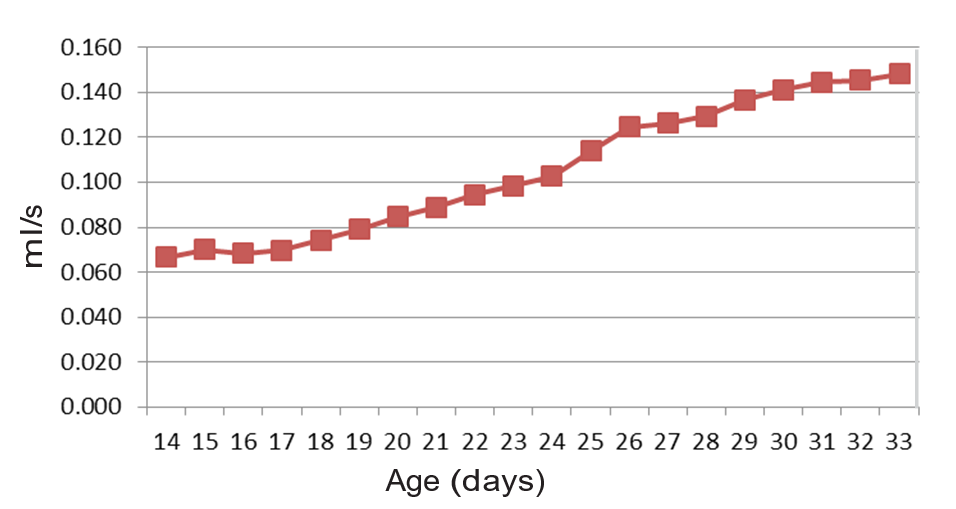
Figure 5. Changes in drinking rate with age
Although the average number of drinking bouts in a day is estimated to be around 16, the actual number of bouts in a day increases with bird age (Figure 6). Water provision, number of drinkers and drinking space must be adequate for flock size and the increased water intake with age. In particular drinking space must be adequate for the flock at older ages as this is when drinking requirements will be at their highest.
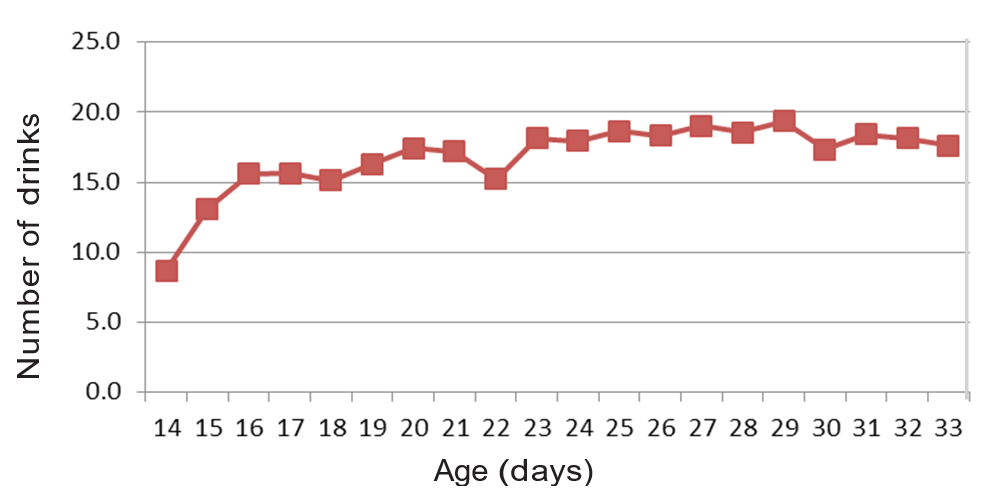
Figure 6. Changes in number of drinking bouts with age
Water to feed ratio
Inadequate water supply can result in reduced feed intake and health issues, and changes in water consumption are an early indication of health and performance issues. The ratio of water intake to feed intake can be a good way of determining whether or not water consumption is adequate. Water consumption and water to feed ratio should be measured daily to ensure birds are receiving enough water. At Aviagen it is recommended that at 21oC (69.8oF), birds will be consuming enough water if the ratio of water to feed is between 1.6 and 1.8:1 (depending on drinker type and environmental conditions). Data on water consumption collected routinely from broiler trials run in The Netherlands confirms that on average this recommendation is correct (Figure 7).

Figure 7. Changes in ratio of water intake to feed intake with age in broilers on nipple drinkers.
Conclusions
Knowledge about drinking behavior provides valuable information which not only allows best practice management to be implemented but also provides the possibility of being able to select for those birds with optimum water intake, allowing:
- The key components and motivations of drinking behavior to be understood so that the management of drinkers and provision of water can be optimised to allow birds to fulfil their preferred drinking behavior.
- Optimisation of water intake.
- To limit the impact of excessive water intake on gut health, bird health and welfare, and ventilation requirements.
- Sustainable production by avoiding excessive water and energy (ventilation) use.
Best practice management for water intake is:
- Early development of feeding and drinking behavior.
- Daily monitoring and analysis of water consumption and feed to water ratio.
- Following published guidelines for stocking density, feeding and drinking space and flow rates.
- Good maintenance programme for drinker lines - replace faulty nipples, regulators.









